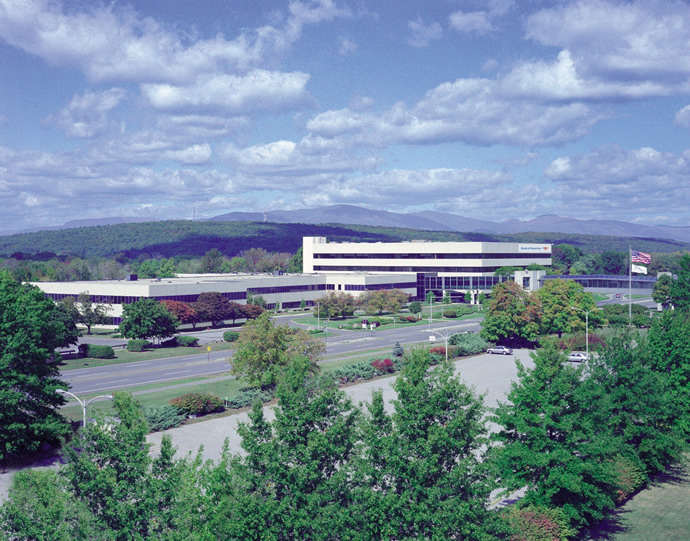If there’s an edge of desperation in the voice of Jim Quigley III, town supervisor of Ulster, N.Y., it’s well earned. The Hudson Valley town, 90 minutes north of the Big Apple, has had its share of economic struggles since the days when IBM first established a major site there.
“In the 1950s, IBM made a site selection decision that changed the face of the community, when they made the decision to build a manufacturing plant in a cornfield in a small little town that was a suburb of Kingston and dependent on an agrarian economy,” says the lifelong Ulster County resident. “It became the driving force of the economic development of the community, taking the population from around 3,500 in 1950 to slightly over 12,000.”
Today the community’s face, like many across the nation, is looking decidedly older, owing to a classic case of brain drain. Some would trace it to IBM’s departure in the mid-1990s.
“Kids lucky enough to go to college don’t come back,” says Quigley. “We’re suffering from that, due to a lack of opportunities in our community. Consequently it’s very tough to make a living.”

The recent pullout by Niagara Bottling from a planned $53-million drinking water bottling operation didn’t help. Nor does an Ulster County population that has lost some 2,000 residents since 2010, with a current estimated population of 180,445. But that very IBM site — on the brink of passing its final environmental remediation milestone — is getting into position to slake the economic thirst of the region.
Early this month, the site’s owner TechCity Properties, which acquired the property in February 1998 from IBM, engaged Alvarez & Marsal Real Estate Advisory Services (A&M) to begin a process that will result in the sale of all or part of the 258-acre property, which contains 1.7 million sq. ft. of existing space and has the potential for millions of square feet of additional development.
“This sale represents a unique opportunity to acquire office and manufacturing buildings at a significant discount to replacement value, as well as developable land in a magnificent setting with views of the Catskill Mountains and Esopus Creek, near the historic towns of Woodstock, Rhinebeck and Kingston, New York,” said Jerry Pietroforte, who heads the A&M team.
In addition to its own road network and CSX rail link, the site has a large freshwater supply for cooling; ample supply and access for gas and electrical service (“sufficient for data centers and back-up generators” A&M notes); access to a diverse fiber-optic network; and even an on-site helipad.
The site is organized to allow for development of individual buildings on 27 separate tax parcels, clusters or as a multi-faceted commercial park. In addition to the buildings, greenfield sites of around 58 and 36 acres are also available for development.
Renewed Promise
Already the property is about 40 percent occupied by a combination of industrial and office tenants unbothered by the fact that environmental remediation related to seepage of industrial solvents from years of R&D was not complete. Pietroforte, a 30-year real estate veteran himself, says that fact alone is reason for optimism.
“What’s different now is that the environmental issue has largely been remediated,” he says, with the final check-off possibly less than a year away. “It can attract the right kinds of tenants, provided it’s a fit for what they’re trying to do operationally and locationally.”
“We’ve been successful in bringing in Bank of America and various low- and high-tech companies,” says TechCity CEO Alan Ginsberg, who acquired the site from IBM in 1998. “There are some cool things going on, including a cluster of agricultural type businesses. The Hudson Valley is amazing — it’s a farm-to-table market. You’re an hour and a half outside the biggest market in the world.”
The approved master plan allows for office, manufacturing, distribution, R&D, and a variety of recreational uses. That designation has not come easy, as redevelopment plans proposed over the years tended to be residential in nature.
“Throughout my career I’ve seen developers one after another propose conversions to residential because that’s the most money they can make,” says Town Supervisor Quigley. “But it’s not necessarily the best answer to the question.”
An experienced real estate professional, Quigley is the son of a construction executive and real estate broker who developed real estate in the area in the 1980s, and who trace their business lineage in the region back to the mid-1800s.
He knows whereof he speaks when it comes to land use, and he knows what sort of operations create quality jobs.
“This is the last major contiguous parcel in our town that has the development attributes for an industrial site,” he says, referencing land use proposals from 2010 that “I felt were incompatible with the history of the site and where the town wanted to see this site go. It would be a detriment to future generations to down-zone that site for less intensive use. It is the town’s objective to see that it remains a site for job generation, as opposed to a conversion to a residential or retail use.”
Pietroforte compliments the collaborative and cooperative spirit among TechCity, IBM, the EPA and the New York Department of Environmental Conservation (DEC) over 15 years of remediation activity.

“I’ve worked on several of these kinds of projects before,” he says. “Until the property is totally remediated, it’s hard to gauge exactly where you are. But it’s usually pretty apparent when you’ve gone from a very egregious situation to a considerably better situation. That’s exactly where we’ve gone here. For the sophisticated real estate investor, I don’t expect the environmental issue is a significant one — it takes due diligence but doesn’t require anything that resembles alarm.”
Given the size of the property and scale of the contamination, he says there’s usually ample opportunity for things to go off the rails for one reason or another.
“In my view it’s an encouraging story” of regulators and companies working together to right a wrong, he says. “IBM has done the right thing here. The engineers all around have stuck around for a lengthy period of time, and they’ve come out the other side in pretty good shape. Alan has fought his way through all of those issues, and done a masterful job of making sure IBM and the DEC have held to their original commitments.”
Finish Line, Starting Line
Ginsberg says it was 20 years ago when he first had contact with IBM senior management about the property, after new leadership had taken the helm at the company.
“This was one of their most important sites on the globe,” he says, where mainframe computer testing, and before that electric typewriter manufacturing, had taken place for years, and an enormous infrastructure had been built up to support hundreds of millions of dollars worth of equipment. At its height of activity, some 7,100 people worked there round the clock, inventing such things as the FAA’s air traffic control system and the SABRE airline reservation system.
Of the way the company dealt with environmental issues on site, Ginsberg says, “IBM, because they’re a standup company, only knows one way to do things, the right way. This is one of the most dignified, professional, reputable companies in the world — I have so much respect for them,” says Ginsberg.
That respect persisted despite some difficult negotiations with Big Blue, which was used to holding onto sites in perpetuity. But gradually it learned to let it go.
“They had built it out for 2.5 million square feet when I acquired it — office, data centers, light industrial and distribution,” Ginsberg says. “They had plans to double the square footage for more data centers and more high-level facilities. So it takes some time to go through that process. It was a difficult, challenging transaction.”

For his part, Quigley says it’s time to see the campus broken apart.
“As I look at it today, it’s configured as a single-user facility, which is not ideal for redevelopment,” he says, noting, among other challenges, a massive centralized utility plant designed to provide IBM low-cost heat and power. He likens the outdated configuration to the hundreds of regional malls gasping for breath across the country. Their locations remain prime, but their physical attributes need a complete overhaul to reflect today’s technology and workforce environment.
For example, all the corridors at the IBM site are on the outside, befitting the single-user corporate ethos of days gone by — “No one gets a window office,” says Quigley — but not the ethos of today’s rental market, where users will pay a premium for window offices.
That said, the entire property — a participant in partnership with Ulster Community College in the Start-Up-NY program — is available to a single end user with a vision. There’s certainly precedent for such a mega-investor in the state: Just visit GlobalFoundries’ manufacturing campus in Malta, N.Y.
“We’ve done a lot of the heavy lifting,” says Ginsberg. “It’s a beautiful environment. The setting is spectacular, with water and mountains. And it’s all flat — 90 percent of the site is developable, which is extraordinary.
“This place,” he says, “is ready to rock and roll.”

